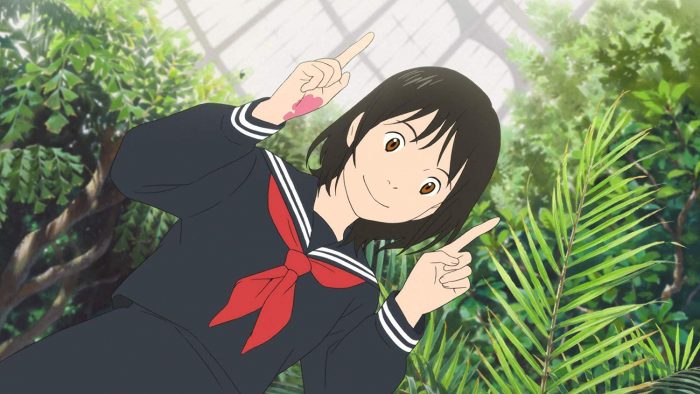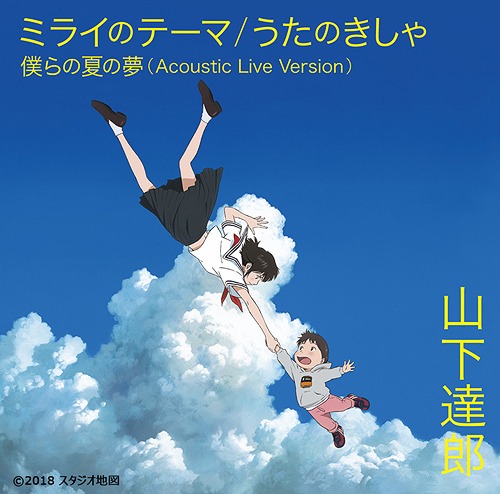
Mamoru Hosoda is the director behind Wolf Children, Summer Wars, and The Girl Who Leapt Through Time. His next film Mirai is deliberately a family film, its contents both suitable for all audiences (G-rated) and its subject matter about family.
Through the eyes of an older brother, the film shows a story about a boy transitioning into his new role in the family. By taking a simple script, Hosoda weaves its simple themes into the film’s visuals, creating a more complex reading of the movie.
In this article, I’ll discuss the merits of a simple and relatable story and how Hosoda’s new film creates an interconnectedness fitting for its Japanese title: Mirai no Mirai.
Simplicity into Complexity: The Power of a Universal Theme
As a script, Mirai is a simple story. After Mirai is born into the family, Kun wants to regain the attention of his parents. However, he does so by outbursts and his selfishness pushes them further away. It is only through learning about his family’s history that he grows into his new role, an older brother.
Taking this script, the film then segments Kun’s growth using self-contained stories. These sections pair Kun with a member of the family, facilitating his growth by proximity. Their effort to solve problems creates a new bond, and Kun leaves having learned an important lesson.
By having each section “bite-sized,” the movie is easily consumable in small chunks, making it easier for younger audiences to pay attention. This ease makes it appropriate for a family film where you don’t want to isolate young children.
However, to include an older audience, there should be some complexity, and the film does this through layers. The layers are the story of each segment, the overarching story, and the visual story. Each layer can be understood individually, but together they create a cohesive, important understanding of the word “family.”
A Recognizable but Unique Setting: The Oota’s House
Early on, we’re given a bird’s eye view, showing the Oota’s house sandwiched between other buildings. For a single person, this house is big, but for a family, it’s cramped. For the majority of the film, the setting is within the house, and while this seems limiting at first, the film works well with its constraints.
As previously mentioned, the film is segmented into short stories, each story taking place “within the house.” However, Kun’s imagination creates a different space. In his mind, he has left on an adventure. To supplement this adventure, the house’s architecture is built to economically use space.
The house is an interconnected single-story house. Once you walk past the tree and into the main house, you can see the living room, kitchen, and upper parts of the house all within eyesight. Each area of the house is segmented by elevation, and the connecting part of the house is a small staircase.
Visually, this house is on full display. Its interconnectedness allows viewers to see, from the bottom floor, what a character is doing on the top. This fits well into the story’s themes and simple script. Nothing is hidden.
At times, the house is filmed is like a stage. We see one section of the house, then the characters exit stage left or stage right out of our view. The camera then pans in the direction they exited. Once the camera centers, we’re on a different elevation of the house, and characters interact once more, this time on a different “stage.” What was once a dining room is now the kitchen, simply by moving the camera upwards.
Moving Through History: Mirai and the Long Take
One of themes in the movie is the permanence of bonds. To portray this, the film does several long takes. A long take, sometimes called a “oner,” means doing an entire scene in one short or creating the illusion that a shot is done without breaking up the action by hiding cuts.
This connects well with scenes in the house but also the scenes in Kun’s imagination. When Kun is in the past, he sees how his grandpa and grandma meet. In a long take, the two race to a tree. The camera pans slowly until we see the finish line: a tree. This same tree is in their house, showing off the deep “family roots.”
These editing decisions help carry the film’s message. As mentioned before, the film is segmented into short stories. To instinctively unify its themes, skillful use of the long take lets viewers read, see, and feel the family’s bonds: through time, through adversity, and through love.
Final Thoughts

The relatable subject, the simple script, and the playful use of long takes make Mirai a movie that’s easily understood by its audience. While the simplicity of its story might not be appealing to some, the way the film carefully weaves its story into its visuals creates a family film that carries its message home.

